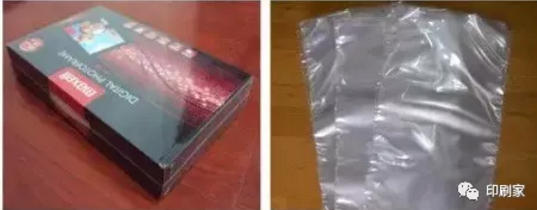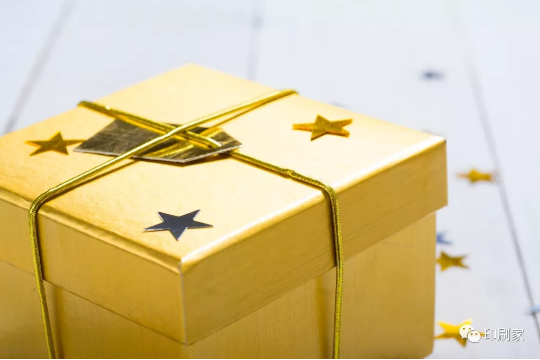Four-color printing
1. The so-called four colors: blue (C), magenta (M), yellow (Y), black (K) four inks, all colors can be mixed through these four inks, the final realization of color graphics and text.
2. The most common and common printing, different substrate printed on the effect of different.

The color printing
1. Spot color printing refers to printing the color with a special ink, which is brighter than the mixed color. Commonly used are special gold, special silver.
2. There are many spot colors. Refer to pantone color card.

A light adhesive
1. After printing, the transparent plastic film is applied to the surface of the printed matter by hot pressing, which can protect and increase the gloss. The surface is bright, as shown in the figure below.
2. The most basic process of surface treatment of carton. Similar to the light oil, but the glue can enhance the hardness and tensile properties of the paper.

A dumb glue
1. After printing, the transparent plastic film is applied to the surface of the printed matter through hot pressing to protect and increase the gloss. The surface is matte, as shown in the figure below.
2. The paper box surface treatment is the most basic process, similar to the varnish, but glue can enhance the hardness and tensile properties of the paper.

UV
1. Printed matter needs to highlight the parts of the local light, make the local pattern more three-dimensional effect.
2. Cooperate with the process of dumb glue printing, there is no effect when the light glue.

Hot stamping
1. Hot stamping is the use of the principle of thermal pressure transfer, the anodized aluminum layer will be transferred to the substrate surface to form a special metallic luster effect.
2. Printing materials are gold, silver, red, green, blue and other colors, but hot stamping can only be monochrome, a variety of colors, but not what color market.

Hit convex
1. Adopt a set of concave and convex templates corresponding to the Yin and Yang of graphics and text, place the substrate between them, and press the embossed concave and convex graphics and text by applying greater pressure.
2. All kinds of thickness of paper, cardboard can not be embossed.

Spurt the code
1. The process of printing identification (production date, shelf life, batch number, enterprise logo, etc.) on the product with the code printer.
2. Can print simple character pattern, more flexible.

Compound bag
1. Composite bag is suitable for vacuum packaging or general packaging of food, electronic products, chemical industry, medicine, tea and other products.
2 can do the same process and paper, can be screen printing, printing, hot stamping.

Blister
1. Blister is a transparent material. The main raw materials are PVC, PE or PET.
2. Can directly replace paper production box, also can cooperate with business card printing forming.
3. It can be used in the fixed products inside the package, called blister.
4 can screen, printing, also can be hot stamping.
5. It can be printed on the machine, but the printing cost is higher, and the screen printing is generally used for small production
。

OPP bag
1. OPP bags are stretchable polypropylene, a kind of plastic, which is actually plastic bags.
2. Before packing the outer box, the product should be covered with an OPP bag to make it clean and hygienic.
3. Different materials include PP plastic bag and PE plastic bag.
4. It has the characteristics of high transparency and crispness. It can also print various patterns and punch holes according to customers' needs.

EVA
1. The chemical name is ethylene-vinyl acetate copolymer. The finished product made of it has the characteristics of good softness, anti-shock, anti-slip and strong compression resistance.
2. Used in packaging and interior to secure and protect the product.
3. There are a variety of colors to choose, and the surface can be used for flocking and flannel technology to enhance the visual effect.

The sponge
1. It is a porous material with good elasticity. The density of the holes is different and the elasticity is different.
2. Used in packaging and interior to secure and protect the product.
3. There are a variety of colors to choose from, and they are generally used directly instead of stacking.

Heat shrinkable bags
1. It is a transparent bag made of materials with strong shrinkage up to a certain temperature to protect the packaging.
2. It is only used to protect the packaging and no other process is made.

Single pink
1. For common carton materials, the paper thickness varies from 80g to 400g, and the higher thickness requires two mounting plates.
2. One side of paper is smooth and the other side is dumb. Only the smooth side can be printed.
3. Various colors can be printed without restriction.
4. Common surface treatment after printing is: too glue, uv, hot stamping, embossing.

Pit paper
1 relative to ordinary paper more straight, bearing capacity is stronger.
2. Common pit, double pit and three pit.
3. Various colors can be printed, but the effect is not as good as single powder.
4. Common surface treatment after printing is: too glue, uv, hot stamping, embossing.

The cardboard
1. Used for making structure of gift box, mounted with a layer of single powder paper or special paper.
The commonly used colors are black, white, grey and yellow.
3. The thickness of paperboard also has different grades, according to the bearing needs to choose.
4. If the mounting is single powder, the process is consistent with the single powder carton; If the special paper, most can only hot stamping, some can achieve simple printing, but the printing effect is not good.

Specialty paper
1. There are various kinds of special paper, here we only say that the packaging materials used: embossed paper, decorative paper, pearled paper, metal paper, gold paper, etc..
2. These papers can be processed to improve the quality of packaging. Embossing type can not be printed, only surface hot stamping, star color, gold can be four color printing.

Gold and silver cardboard
1. The use of UV transfer technology on the surface of the paper coated with a layer of UV oil, and then through the roller will be light column film or specific patterns transferred to the printing paper, so that the surface of the paper has a light column laser paper effect.
2. Can only be printed with UV machine, all kinds of pattern effect can be achieved, more texture than ordinary paper, and have different kinds of luster. But the cost is much higher.

The lacquer that bake
1. On the base that has been polished to a certain rough degree, spray several layers of paint, and bake at high temperature to finalize the design.
2. There are many colors, refer to pantone color card. But only solid color, not gradient.

Oxidation
1. For the surface treatment process of aluminum or aluminum alloy, oxidation treatment generates surface oxidation film on the surface.
2. Color optional, refer to pantone color card. Compared with baking paint, it adds metal texture, but it can only be pure color, not gradient.

The carbon fiber
1. It is a new type of fiber material with high strength and high modulus of carbon content of 95% or more. It has the advantages of conductive and heat conduction, corrosion resistance, high temperature resistance, abrasion resistance, light weight, radiation protection and other materials that cannot be matched.
2. After processing, the texture of carbon fiber itself is presented, and the color is optional.

Electroplating
1. The process of coating some metals with a thin layer of other metals or alloys using the principle of electrolysis.
2. Commonly used gold plating, silver plating and chrome plating.

Screen printing
1. Through squeegee extrusion, the ink is transferred to the substrate through the mesh of the graphic part, forming the same graphic as the original.
2. Screen printing has many colors, please refer to pantone color card, but it cannot achieve gradient printing.

Pad printing
1. Pad printing means that the substrate is an irregular surface, using copper or steel intaglio, cast by silicone rubber into a hemispherical pad head, which is pressed onto the plate to transfer ink to the substrate to complete transfer printing. In simple terms, pad printing can be used to print small and multicolor overprinted products without any requirement on product shape.
2. Pad printing can achieve a lot of screen printing can not reach the effect.

Water transfer printing
1. In a special chemical treatment of thin film, after printed on the required color lines, flat on the surface of the water, use the function of water pressure, the transfer printing colour texture design on the product surface, with coated automatically dissolve in water after cleaning and drying, and then a layer of transparent protective layer is this product has emerged as a distinct visual effect.
2. Water transfer printing can do multi-color, multi-pattern surface printing, such as wood grain, leather grain, etc.

Corrosion
1 through chemical treatment, local corrosion surface and the formation of graphic process.
2. No color optional, display the body color of the object, but after corrosion, additional oil injection can achieve the color effect.

laser
1. It is a technology of cutting, welding, surface treatment, drilling and micro-machining materials by using the characteristics of the interaction between laser beam and materials.
2. No color optional, display object body color. The text is shallower than the etching.

Radium vulture
Laser is also called laser engraving or laser marking, is a kind of optical principle for surface treatment process, first base (spray oil or spray color, then spray surface color, in the laser to reveal the base color pattern).


























